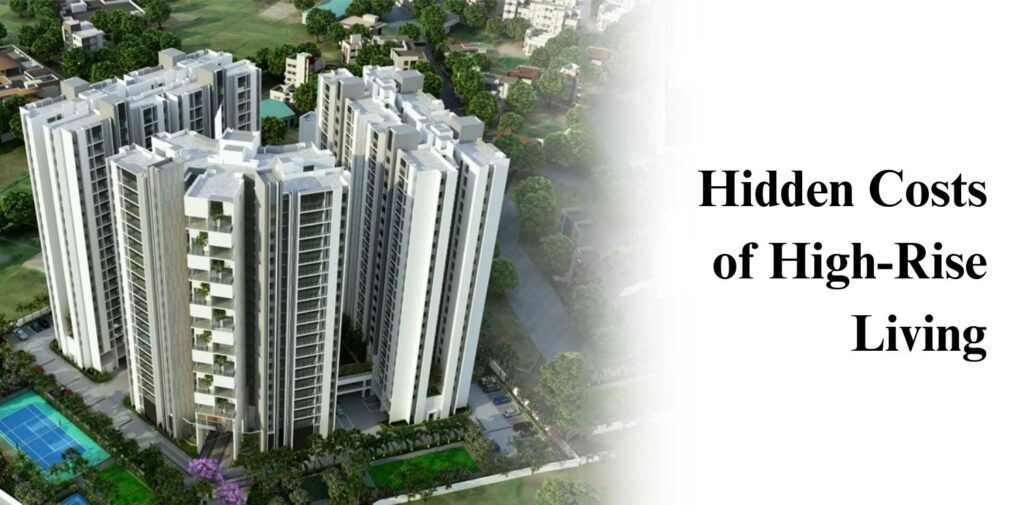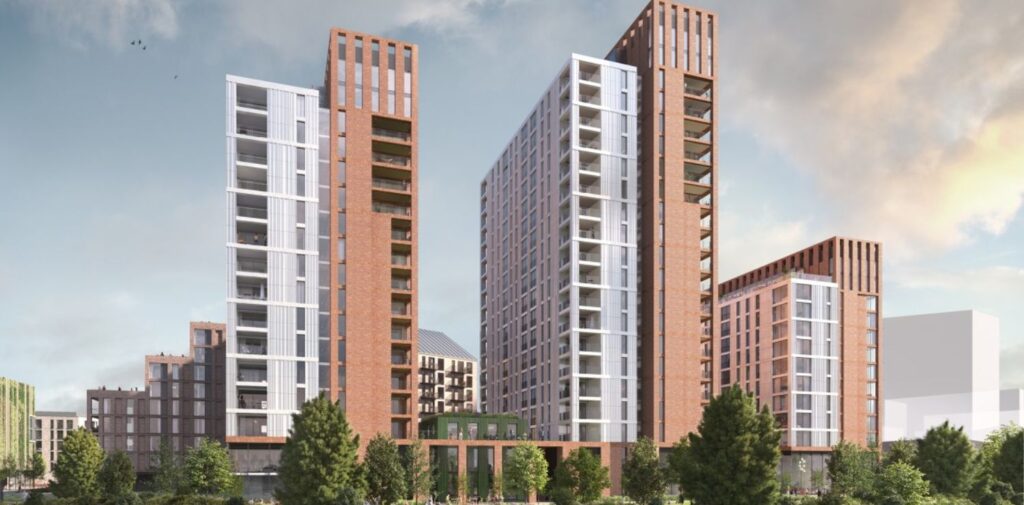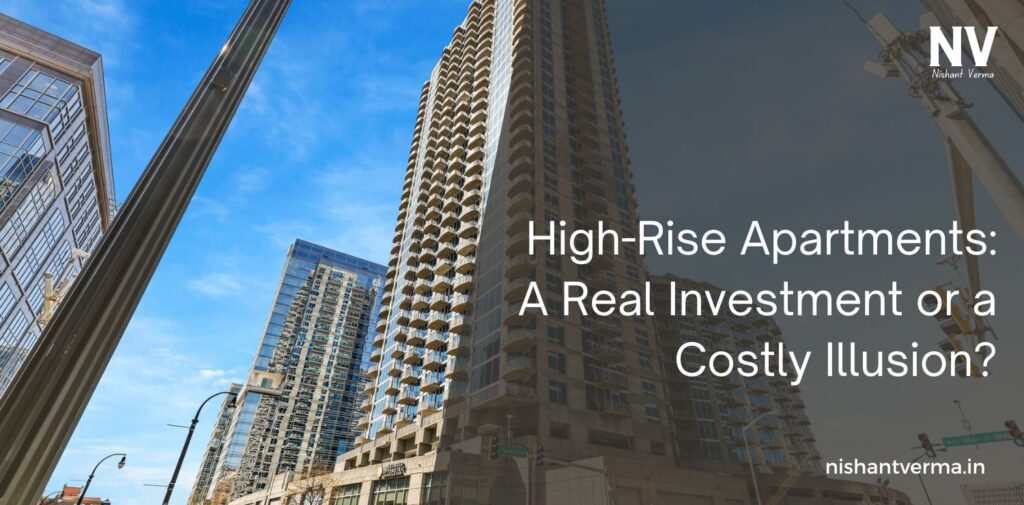In today’s fast-paced world, high-rise apartments are everywhere. From bustling cities to suburban areas, these towering structures have become a common sight. Many people are drawn to the idea of living in a high-rise, often envisioning luxury, convenience, and a better lifestyle. However, the question arises: are high-rise apartments a real investment or just a clever marketing scheme designed to fool customers? In this article, we will explore the truth behind high-rise apartments and why they might not be the golden investment many believe them to be.
The Allure of High-Rise Living
At first glance, high-rise apartments seem like a dream come true. They offer stunning views, modern amenities, and a sense of status. Living in a high-rise can feel exclusive, as if you are part of a select group. Many builders advertise their properties as luxurious, promoting features like rooftop gardens, swimming pools, gyms, and high-tech security systems. With such attractive selling points, it’s easy to see why potential buyers are captivated.
The Marketing Magic
Builders often use clever marketing techniques to create an irresistible image of high-rise living. They showcase beautifully staged apartments in glossy brochures, emphasizing the lifestyle benefits rather than the practical realities. The language used in advertisements can be deceiving. Phrases like “exclusive living” and “invest in your future” are designed to create a sense of urgency and desirability.
However, buyers need to look beyond the flashy marketing. The reality of high-rise living is often quite different from the glossy images portrayed by builders. Many of these are sold based on promise rather than substance, leading to disappointment for unsuspecting buyers.

The Hidden Costs of High-Rise Living
While the initial cost of purchasing a high-rise apartment might seem reasonable, hidden costs can quickly add up. Here are some factors that potential buyers should consider:
- Maintenance Fees: High-rise buildings often come with substantial maintenance fees. These fees cover the costs of shared amenities, security, and upkeep of common areas. Over time, these fees can increase significantly, eating into your budget and potentially making your investment less profitable.
- Special Assessments: In addition to regular maintenance fees, owners may be subjected to special assessments for unexpected repairs or upgrades. If the building’s roof needs replacing or major plumbing issues arise, owners may face hefty bills to cover these costs. Many buyers fail to factor in these potential expenses when making their purchase, leading to financial strain in the long run.
- Depreciation: Unlike traditional homes, which often appreciate over time,These apartments can depreciate quickly. If the market becomes saturated with similar properties, or if the building suffers from management issues, the value of the apartment can drop significantly. Buyers may find themselves unable to sell their apartments for a reasonable price, turning their “investment” into a financial burden.
Builders: The Real Winners
When it comes to high-rise apartments, builders often emerge as the real winners. They capitalize on the demand for urban living and the allure of high-rise properties, creating an illusion of value that may not exist. Here are a few ways builders profit at the expense of buyers:

- Overpromising and Underdelivering: Many builders make extravagant promises during the sales process. They highlight luxurious features and amenities that may not be fully realized once construction is complete. For example, a promised rooftop garden may turn out to be a small patch of grass, and high-tech security systems might not function as advertised. Once the sale is made, builders often move on, leaving buyers to deal with the realities of their purchase.
- Poor Construction Quality: In some cases, builders prioritize profit over quality, cutting corners during construction. This can lead to issues such as poor insulation, plumbing problems, and structural concerns. Buyers may find themselves living in an apartment that requires constant repairs, further diminishing the value of their investment.
- Misleading Financing Options: Builders often advertise attractive financing options that can entice buyers into making a purchase. However, these options may come with hidden fees or unfavorable terms. Buyers may find themselves trapped in a loan with high-interest rates, making it difficult to manage their finances in the long run.
The Impact of Location
Location is a critical factor when considering a high-rise apartment. While urban living is appealing, not all locations are created equal. Here are some considerations:
- Urban Saturation: As more high-rise apartments are built, urban areas can become saturated with similar properties. This oversupply can lead to decreased demand, driving down property values. Buyers may find that their investment does not appreciate as expected, leaving them with a depreciating asset.
- Crime Rates and Safety: They are often marketed as secure living environments. However, safety can vary significantly depending on the neighborhood. Buyers should research crime rates and the overall safety of the area before committing to a high-rise. A seemingly attractive location can quickly become a nightmare if safety concerns arise.
- Accessibility and Convenience: While many high-rise apartments tout convenient access to shops and public transport, the reality can be different. Traffic congestion, long commute times, and inadequate public transport can diminish the appeal of high-rise living. Buyers should assess the accessibility of their chosen location to determine if it aligns with their lifestyle and needs.

Alternatives to High-Rise Living
Given the potential downsides of investing in high-rise apartments, buyers should consider alternative housing options that may provide better value:
- Townhouses or Low-Rise Apartments: Townhouses or low-rise apartments can offer similar amenities without the pitfalls of high-rise living. These properties often come with lower maintenance fees, less crowded living conditions, and a greater sense of community. Additionally, they are often located in quieter neighborhoods, providing a more relaxed lifestyle.
- Single-Family Homes: Investing in a single-family home can provide more control over your property and potentially greater appreciation over time. Homeowners can make improvements, customize their space, and avoid shared maintenance costs. While the initial investment may be higher, the long-term benefits can outweigh the challenges of high-rise living.
- Eco-Friendly Communities: Sustainable living is becoming increasingly popular. Eco-friendly communities offer a chance to invest in a lifestyle that promotes sustainability, community engagement, and overall well-being. These neighborhoods often prioritize green spaces and community activities, creating a more enriching environment.
Conclusion: High-Rise Apartments
High-rise apartments may seem like a glamorous investment opportunity, but the reality can often fall short of expectations. Hidden costs, deceptive marketing, and the builders’ profit-driven motives can lead to financial strain and disappointment. Buyers must do their research, consider alternative housing options, and think critically about the long-term value of their investment.
Ultimately, the decision to invest in high-rise apartments should be made with caution. While the allure of luxury living can be tempting, it’s essential to look beyond the surface and assess whether this investment is genuinely worth it. In a world where dreams can easily become illusions, it’s better to be a wise investor than a naive buyer.




